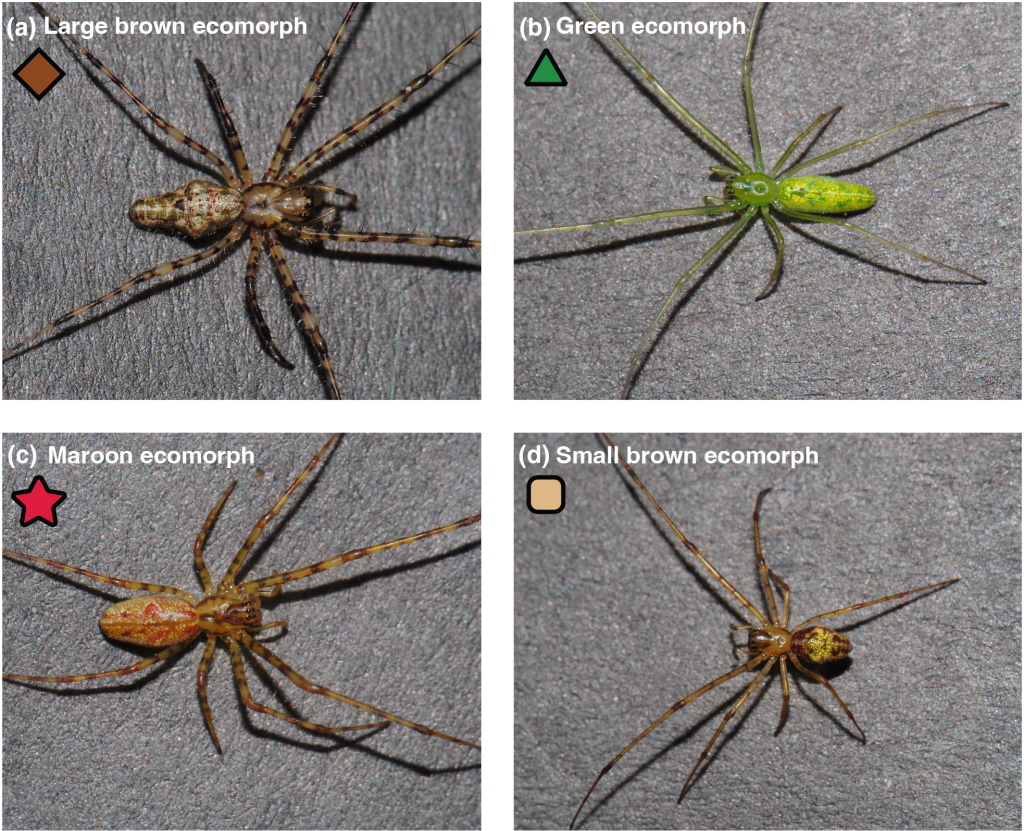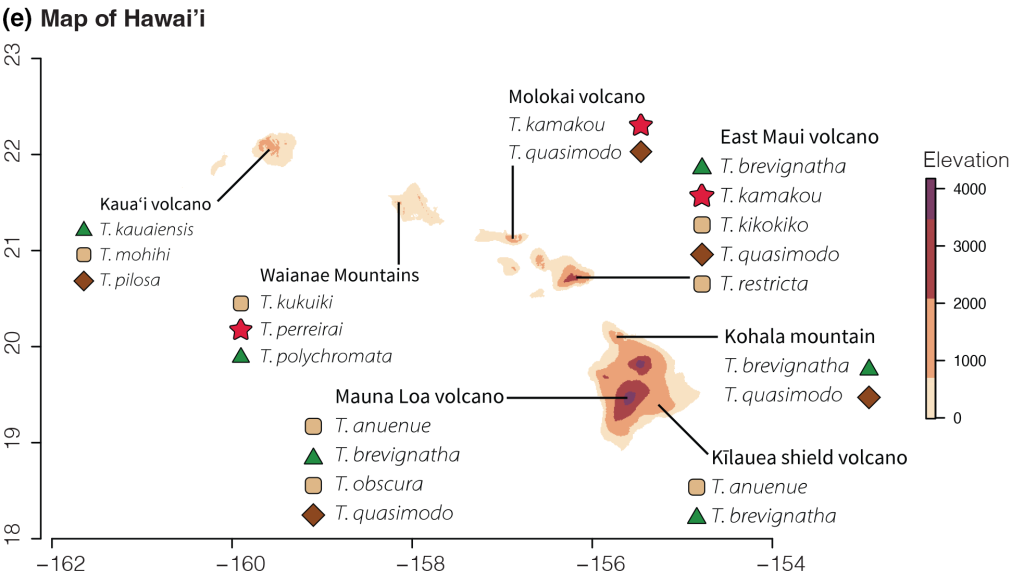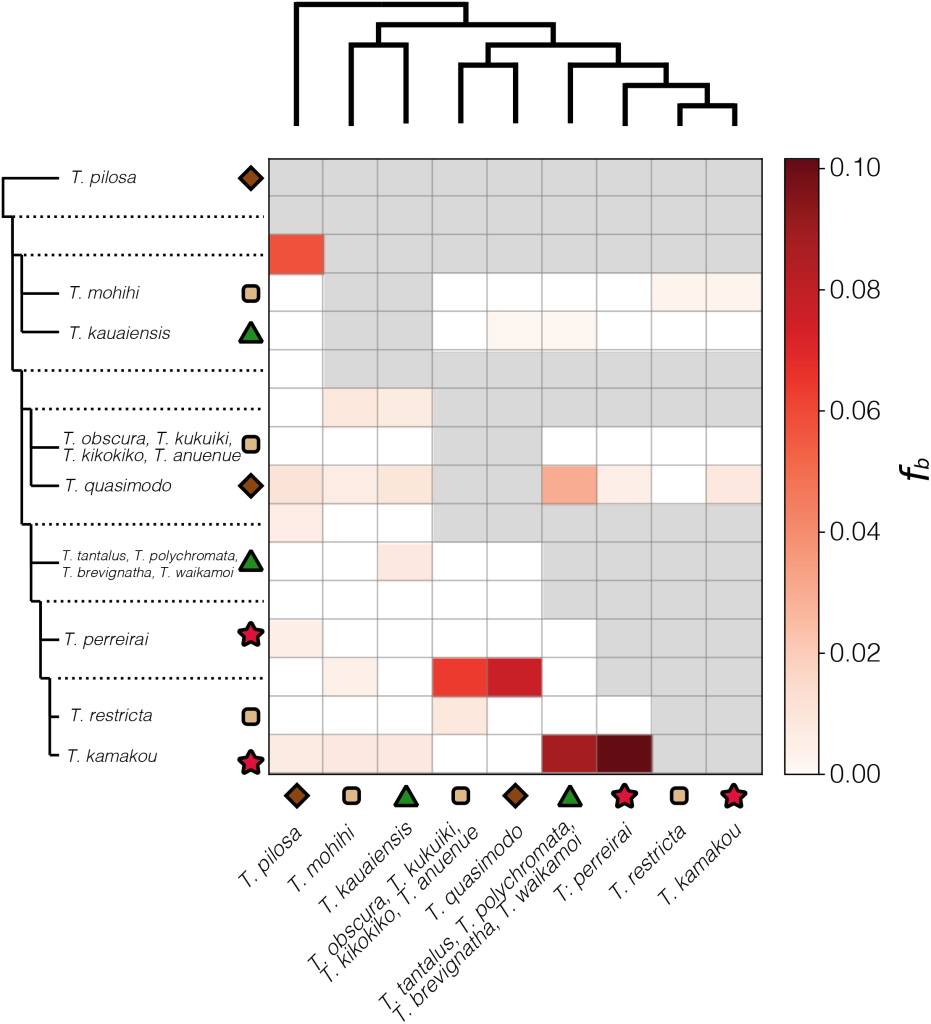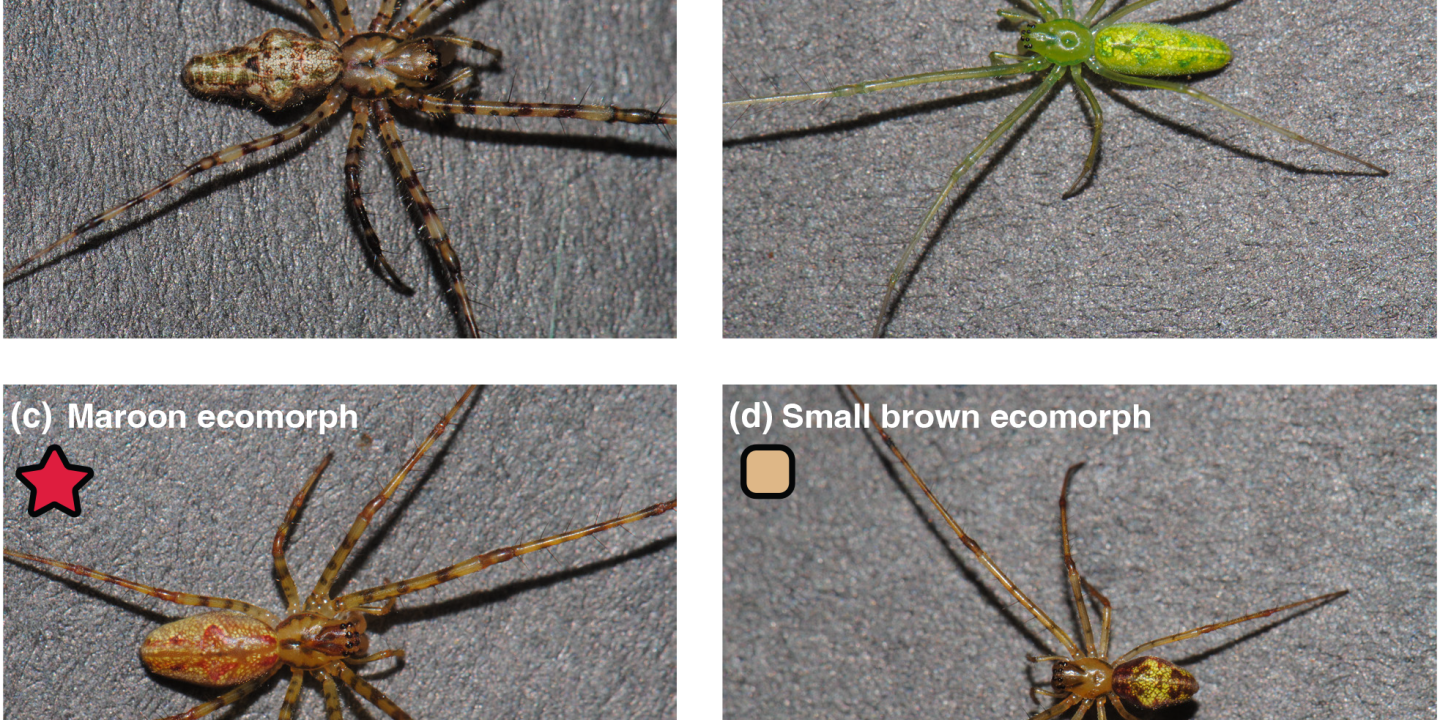Last week a long journey finally came to a result. If you remember, we were lucky to secure a Peder Sather grant to secure a collaboration between Rosemarie Gillespie’s lab and ours. Just a reminder from the last blog; Peder Sather was a banker and founder of the University of Berkeley.
As part of the grant, Jose, a former PhD student of FEZ, visited her lab in Berkeley for a few months at the end of his PhD. However, due to first wave of Covid in 2020, Jose had to depart early from Berkeley. Now the work iniated then has came finally to an end. This was mostly due to the tremendous effort of Jose, his persistence and his ability to bring together a great pool of researcher to create a strong scientific paper. The paper is about spiny-legged spiders from Hawaii and was published at Molecular Ecology.

The spiny-legged spiders of the genus Tetragnatha occur on the Hawaiian islands and have adapted to different micro-habitats, also called ecomorphs, and this went along with different body pigmentation and size (Green, Large Brown, Maroon, and Small Brown). The Hawaiian radiation of Tetragnatha consists of 17 species. They can be grouped into four groups based on the substrate they inhabit and their phenotypic traits: the Large Brown is found on tree bark, the Green on leaves, the Maroon on mosses and the Small Brown on twigs.The spiny-leg radiation has colonized the Hawaiian archipelago about 5.1 million years ago, at the time of the emergence of the oldest high-elevation island of Kaua’i. It has been proposed that the evolution of ecomorphs has occurred through repeated cycles of directional selection.

More generally, the repeated evolution of phenotypes provides clear evidence for the role of natural selection in driving evolutionary change. However, the evolutionary origin of repeated phenotypes can be difficult to disentangle as it can arise from a combination of different factors such as gene flow, shared ancestral polymorphisms or mutation. The radiation of Hawaiian spiny-legged spiders is an ideal system to study the phenomenon of repeated evolution.

In this paper, we investigated the evolutionary history of this radiation using 76 newly generated low-coverage, whole-genome re-sequenced samples, along with phylogenetic and population genomic tools. Considering the Green ecomorph as the ancestral state, our results suggest that the Green ecomorph likely re-evolved once, the Large Brown and Maroon ecomorphs evolved twice and the Small Brown evolved three times. The evolution of the Maroon and Small Brown ecomorphs likely involved ancestral hybridization events (see figure above about shared alleles), while the Green and Large Brown ecomorphs likely evolved through novel mutations, despite a high rate of incomplete lineage sorting in the dataset. Our findings demonstrate that the repeated evolution of ecomorphs in the Hawaiian spiny-legged Tetragnatha is influenced by multiple evolutionary processes.
Cerca, J., Cotoras, D. D., Santander, C. G., Bieker, V. C., Hutchins, L., Morin-Lagos, J., Prada, C. F., Kennedy, S., Krehenwinkel, H., Rominger, A. J., Meier, J., Dimitrov, D., Struck, T. H., & Gillespie, R. G. (2023). Multiple paths toward repeated phenotypic evolution in the spiny-leg adaptive radiation (Tetragnatha; Hawai’i). Molecular Ecology, 32, 4971–4985. https://doi.org/10.1111/mec.17082
![]()
